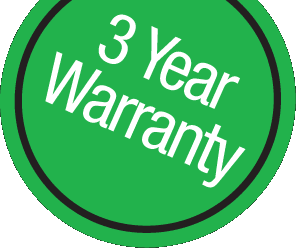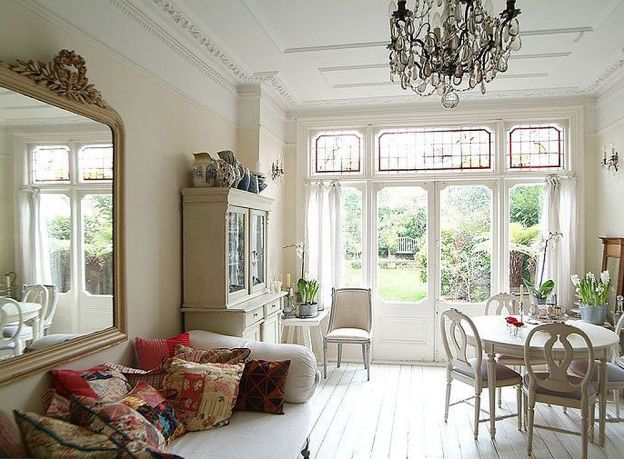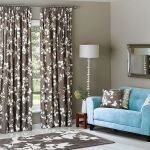Investing in custom made curtains can have a huge impact on the overall look and function of your home. Curtains not only work as ‘fashion’ for your windows, they also have important functional benefits. So it’s no surprise that customers are often full of questions about how to get the most out of their custom made curtains. Here at Curtains On The Net we get a lot of queries from customers about fabric and hang. Here are some examples and some of our tips in response.
What kind of fabrics should I use for my custom made curtains?
Weight is an important consideration when choosing your fabrics. Lighter weight or sheer curtains create a breezy ambience and are generally more affordable for the average homemaker. Disadvantages include that they can also let too much light into a room. Meanwhile medium to heavier weighted curtain fabrics add a classy appearance to a room and work well in formal areas such as a living room or dining room. Lightweight curtains might be made of cotton, muslin or silk, while medium weight custom made curtains might work well in chambray, damask, brocade or jacquard, and heavyweight curtains might be made from lined velvet.
How much should I spend on fabric for my custom made curtains?
Of course this is a bit like the “How long is a piece of string?” question; it all depends on your budget and requirements. However if your budget is limited then as a rule you don’t need expensive fabric for custom made curtains as they don’t undergo much wear and tear compared to say floor coverings or soft seating items such as armchairs, ottomans and couches. Linen look curtains are particularly strong sellers at the moment; the linen look is very on trend, but it also ties in with a timeless neutral aesthetic that won’t go out of fashion. By contrast, it’s advisable to avoid high maintenance fabrics such as dark velvets that will fade unless lined. Shiny fabrics like satins or silks can also be demanding to maintain and hang.
Having said that, there is a school of thought that suggests if you’re investing in custom made curtains it’s worth spending your money on something truly unique! It might be worth considering a daring print inspired by classic design. Even if you end up opting for something more neutral, at least you’ve explored all the options.
How do I know how much fabric to use?
It’s usually best to assume that each panel is around 275 cm for a standard height window of 200 cm or so, allowing extra for generous hems at the top and bottom. If you want pleating to add more volume you should probably double these dimensions, but again, this should be carefully considered if you are on a budget.
What kind of pleats work best for custom made curtains?
There are a number of commonly chosen options in terms of pleats. Pencil pleat curtains are a classic and work well in a wide range of fabrics including full blockout. Pinch pleat curtains add style to any window offering a traditional look that’s also very elegant. Box pleat curtains or inverted box pleat curtains create a clean modern look and suit most window sizes. Meanwhile for a more functional, less fussy look, many customers opt for simple eyelet curtains, which are a very affordable form of custom made curtains and can be made to fit any rod width and height.
A note about pleating for your custom made curtains
If you are opting for a tightly pleated hang, a word of warning about how the pleats affect the look of your fabric. Ideally most suppliers of custom made curtains should consider attention to detail very important; pleating to the design of the fabric is one example of this kind of perfectionism that can make a significant difference to the look of the final product.
Pleating to the design of the fabric ensures that the repeat pattern on your custom made curtains will be shown to best effect; in other words if the pattern consists of red and pink flowers, the pleat will show these evenly distributed across the width of the window. A poorly pleated curtain might hang in such a way that only the red flowers are visible. Correct pleating does cost more, as it requires more fullness than the normal amount, sometimes as much as three times fullness.
The idea is that every fold of fabric within in the curtain falls in exactly the same part of the pattern, particularly important when using a fabric like a stripe. Not pleating to the design of the fabric can result in unsightly and slightly chaotic looking curtains.
Should I use trimmings and tiebacks for my custom made curtains?
True enough, Victorian opulence has not been in style for some time, however there’s a new interest in luxury and exoticism in some quarters of interior design that lends itself well to add-ons such as trimmings and tiebacks. In terms of the strongest selling products, tie-backs are still in demand, because they play a specific role in holding your custom made curtains open! If heavy brocades, silk ropes and tassels aren’t your style, there are more pared back alternatives available; coarse natural rope on a linen curtain can look eye catching and very on trend.
Interest in opulent drapes and trimmings to match is very much in line with a move back towards a more formal look in the home, with the emphasis on warmth, colour and texture. Tassel fringing and bullion fringing for curtains and cords and brush fringes for cushions are making a comeback in some areas, while for more modern tastes there are alternatives; beads, feathers, crystals and anything ‘bling’ are certain to attract interest and enthusiasm. Tiebacks can also be custom made from drapery fabrics to match your custom made curtains, with the fabric also frequently echoed in other smaller soft furnishing items such as cushions.







